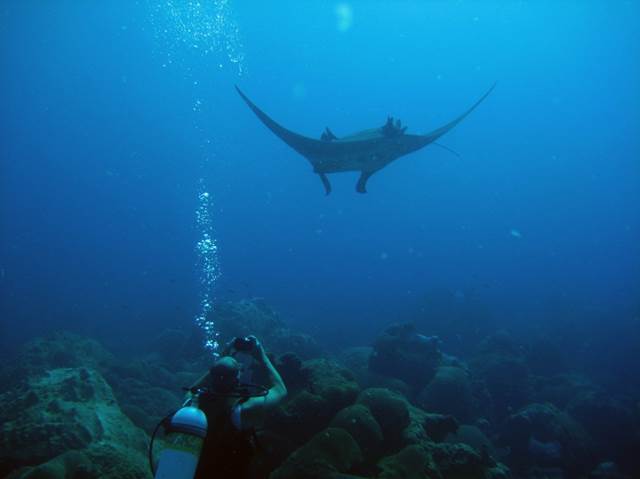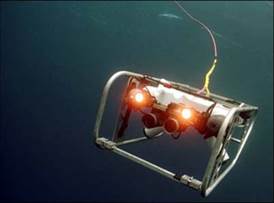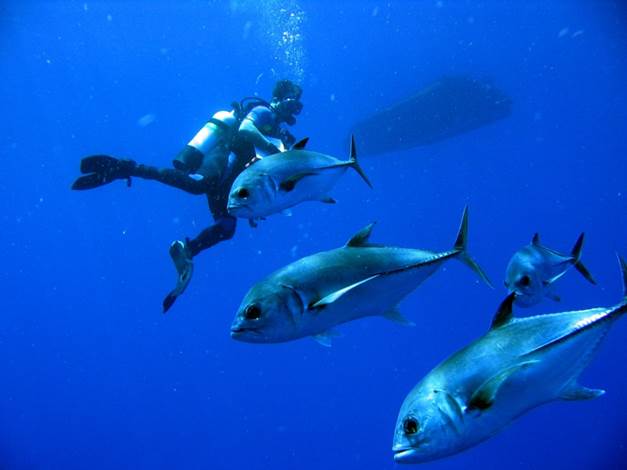via the NOAA Ocean Sciences Blog, 9-10-2014
By Randy Clark, NCCOS Marine Biologist
An Ocean Oasis
On the northern continental shelf of the Gulf of Mexico there are many banks that rise out of the depths. Many of these act as an oasis in a relatively deep and dark ocean. One particular oasis is so magnificent that it has been included as one of NOAA’s National Marine Sanctuaries.
Flower Garden Banks National Marine Sanctuary consists of three banks, which rise to approximately 60 feet from depths of 400 feet. The shallow depths combined with the warm and clear water have allowed spectacular coral communities–similar or even better than those in the Caribbean–to thrive on two of those banks.
A Need for Answers
The coral communities here are the most northern in the continental United States and are a truly unique resource enjoyed by locals and visitors alike. In fact, the sanctuary is open to visitors for recreational fishing and scuba diving. Currently these activities are unmonitored. Scientists also have a limited understanding of the animals that live in the sanctuary, specifically how many there are and what their role is in the ecosystem.
These unknowns are a concern to fishermen, divers and scientists, like me, who want a better understanding of the marine life and underwater habitats in the sanctuary. In response, we assembled many different people and organizations with specific areas of expertise to collect data in all parts of the sanctuary.
Building a Research Team
We gathered divers from all parts of NOAA, Harbor Branch Oceanographic Institute,Texas A&M, Oregon State, and the University of North Carolina at Wilmington to collect data on the shallow (to 110’) and deep (to 150’) coral reefs of the sanctuary.
We used the expertise of the Undersea Vehicles Program at the University of North Carolina at Wilmington to use a remotely operated vehicle to collect data in the deeper habitats of the sanctuary.
And we used high-tech sonar to detect fish on the bottom!
What We Discovered
Overall we spent three years collecting data in the sanctuary. Data from our missions contributed to establishing a baseline: a measure of what the status of fish and habitats are now. This information will be used to inform future management decisions, including a research area that will be used as a control area for conducting future experiments.
Some key findings you should know about are below. They are also outlined in a new report called, Fish and Benthic Communities of the Flower Garden Banks National Marine Sanctuary: Science to Support Sanctuary Management.
-
We determined the communities of coral reefs we observed are stable and relatively healthy. The sanctuary’s coral reefs are possibly the least impacted in the region.
- The sonar used to detect fish revealed that the number of large fish (greater than 12 inches) on West Flower Garden Bank was three to 10 times greater than other coral reef ecosystems in the U.S. Caribbean and Florida.
- We observed that non-native lionfish were beginning to invade the sanctuary during this three-year study period.
- Our data on fish communities indicate that economically valuable fish species (groupers and snappers) and top predators (sharks) were larger and more abundant in waters deeper than 108 feet.
- We improved maps of sea floor habitats for East and West Flower Garden Banks to more accurately identify habitats throughout the sanctuary.
- We were also able to make a number of management recommendations, including expanding the frequency of monitoring activities and including deeper reefs in monitoring efforts.
Flower Garden Banks National Marine Sanctuary is a very special place, one that NCCOS is proud to support. On a personal level, the sanctuary’s beauty is captivating and I will always have fond underwater memories from my work there.
To learn more about our work, and to download a full report with findings, visit: http://coastalscience.noaa.gov/projects/detail?key=44. Special thanks to the NOAA Coral Reef Conservation Program, the Office of National Marine Sanctuaries and the National Centers for Coastal Oceans Science for their support.
Randy Clark is a marine biologist with the National Centers for Coastal Ocean Science. Over the past three years, he has led a diverse team of scientists in their efforts to study the fish, corals and sea floor habitats of Flower Garden Banks National Marine Sanctuary.











